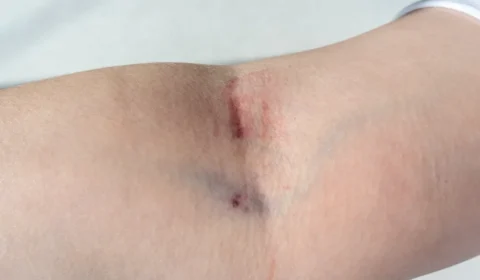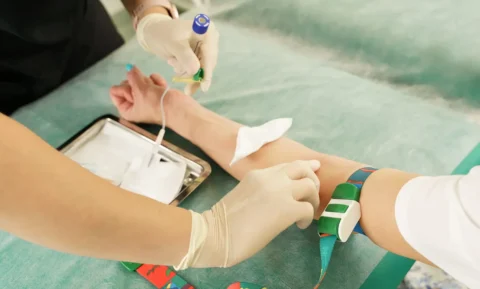Intense pulsed light or IPL hair removal might be more convenient than other procedures for hair removal, but it’s not without risks. As the procedure involves using lasers, patients and practitioners may run into accidents and injuries without proper safety precautions. Because of this, an aspiring laser technician must take safety classes for handling laser hair removal devices to ensure the patient’s health, safety, and successful results of the procedure.
So what safety classes do you need for handling laser IPL hair removal devices? Those undergoing training courses for laser hair removal treatment will learn the safety procedures involving laser, sterilization and sanitation, pain management, avoiding medical errors, and prevention and treatment of burns. Beauty therapists must take these lessons to prevent the risks of burns, hyperpigmentation, eye injury, infection, and respiratory tract irritation.
What Safety Classes Do You Need for IPL Hair Removal Devices?
If you’re training to become a laser technician, you would be taking classes on how to safely conduct laser hair removal treatments and set up the procedure for success. These classes involve laser safety procedures, sterilization and sanitation, managing pain, medical error prevention, and prevention and treatment of burns.
1. Laser Safety Procedures
Laser treatment is a non-invasive procedure that penetrates deep within your skin and treats every hair follicle, triggering its resting phase. If its light energy is strong enough to reach the hair follicle, then there might be hazards if it’s not used with safety precautions.
Students will learn these safety protocols when using a laser hair removal device to eliminate unwanted hair. They may expect different considerations depending on the location of the body hair or on the treatment area, be it the facial hair, bikini line, underarm, or legs.
These safety procedures for conducting laser hair removal services involve learning the standard operating procedures, protective gear needed, safety zones, warning labels, hazard classification, fire hazards, and more.
You may also learn about assessing the patient’s candidacy for the hair reduction treatment. Laser treatment isn’t also recommended on darker skin without doing patch tests. One of the errors to avoid is haphazardly treating a patient with a darker skin tone with laser hair removal devices.
2. Sterilization and Sanitization
Intense pulsed light for hair removal might not require incisions, but sterilization and sanitation are still a necessary part of the procedure. This lesson allows you to ensure that the applicator is always kept sterilized and the patient’s treatment area is properly cleaned. This will avoid skin irritations or infections and other side effects.
3. Pain Management
Every patient reacts differently to pain, but you, as a laser technician in training, should have different ways of reducing their discomfort when treated with an IPL hair removal device. The usual procedure during treatment with an IPL hair removal device is for aestheticians to apply a cooling gel or cooling spray on the treatment area to reduce the pinching sensation or any discomfort.
4. Prevention of Medical Errors
A laser hair removal procedure might have minimal risks as a non-invasive treatment, but there will still be chances of medical errors. This instance may especially happen at the hands of an inexperienced hair reduction practitioner, so during training, you can expect an exhaustive lesson on safety protocols and avoiding accidents.
These medical errors involve using an inaccurately high energy setting at the laser hair removal device. This provides risks of side effects, like having a darker skin tone, blistering, hypopigmentation, and more. Other malpractices include using the wrong laser device, not applying enough cooling spray or gel, and giving incorrect information.
5. Prevention and Treatment of Burns
Patients may develop burns from laser hair removal devices if the practitioner didn’t toggle the accurate settings or do the proper preparations. Part of your training for performing laser hair removal treatments is preventing and treating burns.
Trainees studying burn prevention and treatment from intense pulsed light procedures should identify what a burn looks like, how to ease pain, and what you should and should not apply when treating it.
Why Do You Need Safety Classes for IPL Hair Removal Machines?
Laser hair removal treatments involving intense pulsed light offer long-lasting effects of hair reduction. Patients might no longer need to pluck, wax, or thread their hair because the laser light had already triggered the hair follicles to lay dormant, not inciting hair growth.
Cosmetic procedures, like laser hair removal treatment, may only offer successful results when done right. That’s why aspiring laser technicians must take safety classes when treating with a laser hair removal device. You should take these lessons to avoid causing patients burns and hyperpigmentation, eye injury, infection, and respiratory tract infection. You might want to learn the proper machine calibration.
1. Avoid Burns and Hyperpigmentation
Students practicing laser treatments will learn the safe options for using light energy because too much might cause laser burns or hyperpigmentation. You should also assess the patient’s candidacy for the treatment because this might not be a suitable treatment option for some of those with darker skin tones.
2. Prevent Eye Injury
Laser energy might cause eye injury, even if it’s just a brief exposure. These devices produce near-infrared laser radiation energies that can burn the retina due to the high energy absorbed by the eye. This can happen if the patient isn’t using the right protective eyewear.
3. Prevent Skin Infection
Damaged skin from laser hair removal services can progress into an infection — this is one of the risks you should avoid once you start performing these treatments. Your safety lessons are geared towards you avoiding this adverse reaction.
Infection may also come from poor sanitation habits, such as failing to sterilize the cooling device used. Ensure disinfecting every product you’ve used that has come into contact with skin.
4. Avoid Respiratory Tract Irritation
Removing unwanted hair with laser hair removal treatment may produce a sulfuric odor from the laser light treating every hair follicle, stopping hair regrowth. Inhaling too much of this odor may cause both the patient and the technician respiratory tract infection.
That is why medical spas should ensure proper ventilation to promote better air regulation during every laser hair removal procedure. Learning safety protocols from your lessons allows you to foresee these risks and raise concerns immediately.
5. Know the Proper Calibration of the Machine
The IPL hair removal device might sometimes perform poorly due to components in the machine degrading. You might not be taught the specific mechanisms of laser products, but taking up safety classes allows you to know if the laser device needs to be checked by a mechanic. Preventing treatment from a malfunctioning laser device might reduce accidents during the procedure and ensure a better session for the patient.
6. Ensure Efficacy of Treatment
Following the standard operating procedures during a laser treatment ensures the optimal function of the laser products for removing unwanted hair. It also reduces the risks of health hazards not only to the patient but also to the technician. Delivering laser hair removal services smoothly sets up the procedure for success.
Aesthetic Medicine Training by Industry Experts at FACE Med Store
Learning the risks and safety protocols concerning laser products and implementing them always help ensure a safer and more successful procedure that protects not only the patient but also your aesthetic practices. These safety classes may involve safety procedures, sterilization and sanitation, pain management, preventing medical errors, and prevention and treatment of burns.
That’s why you should check out the course details when enrolling in a laser treatment training program and opt for the package with complete safety classes. FACE Med Store offers comprehensive aesthetic training programs mentored by the best experts in the industry. You can learn more about our educational packages by visiting our website or giving us a call.






